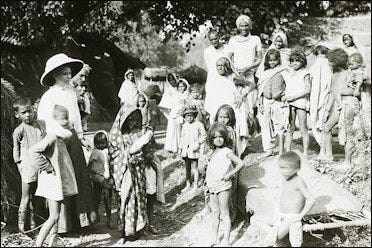From UPSC perspective, the following things are important :
Prelims level: Duarte Barbosa
Mains level: Impact of missionary influence on caste and identity in India

Central Idea:
The article explores the historical roots of the terms “caste” and the “Dravidian” identity in India, asserting that they were products of early Christian European missionary work during the colonial period. The focus is on missionaries’ documentation of Bharat’s social organization, their motivations, methodologies, and the impact of Christian theology on shaping their perspectives.
Key Highlights:
- The term “caste” in the context of Indian society is a modern concept introduced during the colonial period.
- The Portuguese official Duarte Barbosa first used the term “casta” in the sixteenth century, based on his observations in the Vijayanagara Empire.
- The Danish Protestant Mission in Tranquebar, founded in 1706, played a crucial role in shaping early missionary strategies, including translations of the Bible and running schools.
- Bartholomeus Ziegenbalg, a German Lutheran missionary, contributed to the creation of the Dravidian identity by distinguishing the “Tamil Religion” from the “Brahminical” religion of the North.
- The French Catholic Missionary Abbé Jean-Antoine Dubois’ work became influential in understanding caste, and it was largely based on an earlier work by French Jesuit Missionary Gaston-Laurent Coeurdoux.
- Dubois’ work was acknowledged by William Bentinck, the Governor of Madras, as important for government servants to understand the customs of the Hindus.
Key Terms:
- Caste
- Dravidian
- Colonialism
- Ethnocentrism
- Missionaries
- Vijayanagara Empire
- Tranquebar Mission
- Protestant Mission
- Tamil Religion
- Brahminical
Key Phrases:
- Colonial-missionary roots
- Ethnography of Bharat
- Protestant missionary strategy
- Caste distinctions among converts
- Sanskrit and Sanatan Dharma
- Dravidianists
- Christian evangelical motives
- Anthropological service
- British colonial apparatus
- Independence India’s brand of secularism
Key Quotes:
- “The use of ‘caste’ to understand Bharat’s society is a modern phenomenon attributable to the colonial period.” – Nicholas B Dirks
- “Tamil Saivism has nothing to do with Sanatan Dharma.” – Bartholomeus Ziegenbalg
- “Dubois performed an anthropological service to the British rulers of India…in order to convert souls.” – Nicholas Dirks
Anecdotes:
- Bartholomeus Ziegenbalg’s understanding of the religion in the South, considering it distinct from the Brahminical/Vedic religion of the North.
- The toleration of caste distinctions among converts by the Danish Protestant Mission in Tranquebar.
Key Statements:
- “The term ‘caste’ in the context of Indian society is a modern phenomenon attributable to the colonial period.”
- “Indology has its foundations in Christian evangelical motives, aiming to understand the social lay of the land for soul harvesting and conversion.”
- “Despite the history, it is deemed ‘anti-secular’ to draw attention to the continuity of thought between missionaries of the past and present-day Dravidianists.”
Key Examples and References:
- Duarte Barbosa’s observations in the Vijayanagara Empire.
- Bartholomeus Ziegenbalg’s works – ‘Malabarian Heathenism’ and ‘The Genealogy of Malabarian Gods.’
- Abbé Jean-Antoine Dubois’ work – ‘Description of the Character, Manners, and Customs of the People of India.’
- William Bentinck’s acknowledgment of the importance of Dubois’ work for understanding Hindu customs.
Key Facts and Data:
- The term “caste” was first used by Duarte Barbosa in the sixteenth century.
- The Tranquebar Mission was founded in 1706 by Bartholomeus Ziegenbalg.
- The French Jesuit Missionary Gaston-Laurent Coeurdoux’s work influenced Abbé Jean-Antoine Dubois.
- Dubois’ work was translated from French to English and formally published in 1816.
Critical Analysis:
The article convincingly argues that the understanding of “caste” and the “Dravidian” identity has roots in early Christian missionary work. However, a more explicit discussion of the consequences of this influence and a deeper exploration of the role of the native population in cooperating with the colonial exercise would provide a more comprehensive analysis.
Way Forward:
Further exploration is needed to understand the lasting impact of missionary influence on caste and identity in India. This includes examining the socio-cultural repercussions and the contemporary relevance of these historical developments. A nuanced analysis can contribute to a more comprehensive understanding of the complexities surrounding caste and identity in Indian society.
Get an IAS/IPS ranker as your 1: 1 personal mentor for UPSC 2024
